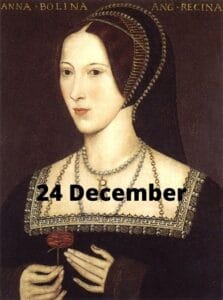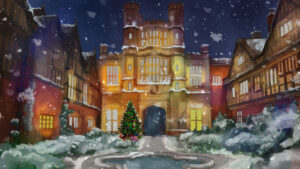 It’s Christmas Eve and that means it’s the last day for our Advent Calendar treats!
It’s Christmas Eve and that means it’s the last day for our Advent Calendar treats!
I do hope you’ve enjoyed these history-themed treats. A big thank you to all those who contributed to make it a wonderful Advent Calendar.
Today, on the Anne Boleyn Files Advent Calendar, we have a special Christmas message.
Simply visit the Advent Calendar by clicking here.
Then, why not enjoy another historical treat by heading over to the Tudor Society? Find out who is hiding in the very Christmassy Coughton Court today.
Simply go to https://www.tudorsociety.com/advent2020/!
And in case you missed the daily Teasel’s Tudor Trivia videos from Advent last year, here is Teasel’s 24th December treat:
And, if you want even more Tudor history goodness, then here is today’s “on this day in Tudor history” video:
